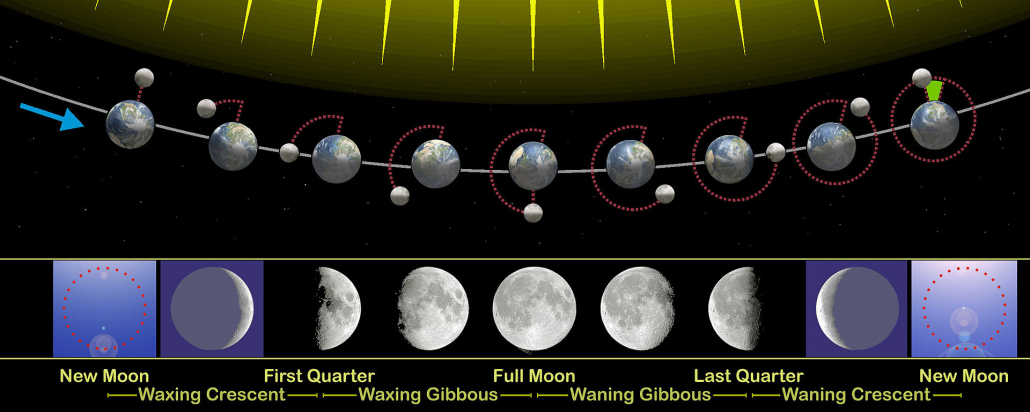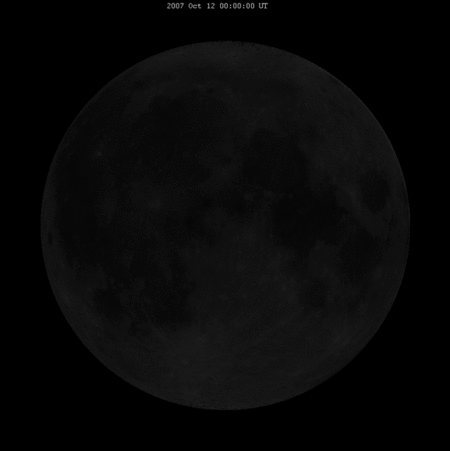Lunar diaries
Looking up into the sky at night can sometimes make us feel as though we are alone in the universe. But look up on a clear night (or a clear day) you will see the easily recognisable face of the Earth’s natural satellite – the moon.
Over the course of a lunar month (about 27 days), you will see the many faces of our moon – from the seemingly invisible new moon to the tell-tale ‘goodbye’ of the waning crescent. So why does the moon look like it is changing shape each night?
Well, just like the Earth, the moon is half lit up (illuminated) by the sun – like Earth the moon has a ‘day’ side and a ‘night’ side. From our position on the Earth we see changing amounts of the day side and the night side as the moon orbits the Earth. So when the moon is between the Sun and Earth we cannot see the moon because the sun is shining on the side furthest away from us – we call this a new moon. When the Earth is between the Sun and moon, the moon is fully illuminated and we see a bright full moon. The video below by Derek at Veritasium has more detail and also explains why you sometimes see a red or ‘blood’ moon.
The shape we see is a result of the position of the moon relative to the sun. We see the brightly-lit part of the moon where light from the sun falls upon it.
The Think Physics Lunar Diary is a great way of investigating the moon during a month. All you need is a pencil and a clear sky (day or night will do) and you can begin your career as a young astronomer. Exploring constellations with your child is also fun. The Guardian Starwatch website has month-by-month maps of the night sky which you can use.
Lunar Diary download (PDF, 1Mb).
“Moon phases en” by Orion 8 – Own work. Licensed under CC BY-SA 3.0 via Wikimedia Commons
“Lunar libration with phase Oct 2007 450px” by Tomruen – Lunar_libration_with_phase_Oct_2007.gif. Licensed under Public Domain via Wikimedia Commons
Learning more about the moon
If you’re interested in learning more about the moon, take a look at these brilliant videos from the SciShow Space and Veritasium YouTube channels.






